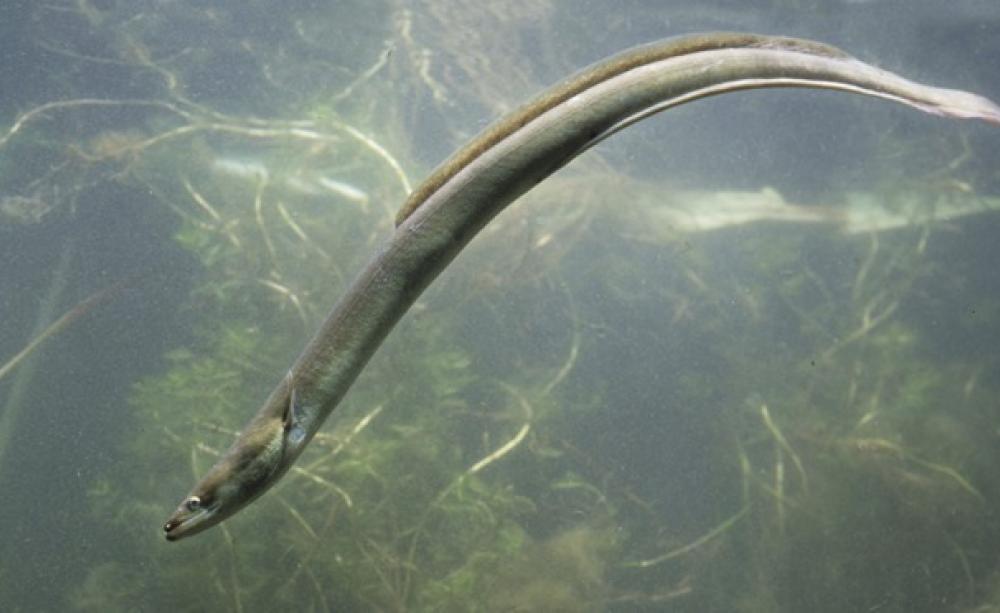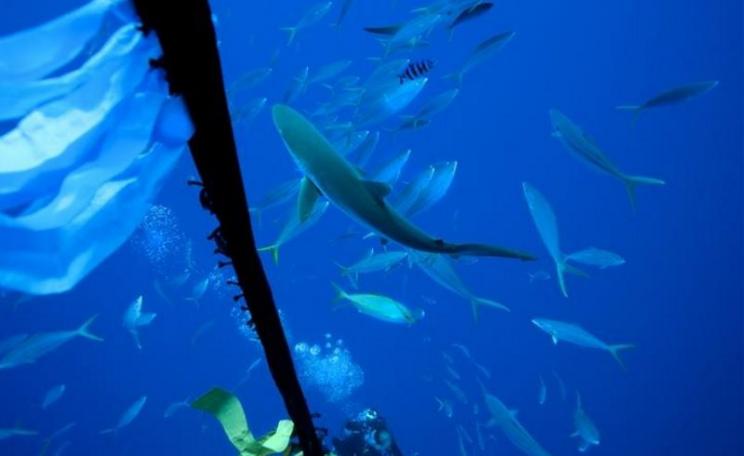-
Eels, it is fair to say, do not fall into the bracket of our best-loved creatures. They're slippery and slimy, with a snake-like appearance, and perhaps as far removed as anything from the likes of the Instagrammable panda, whale or gorilla.
These extraordinary creatures are vital to maintaining a balanced ecology in aquatic environments. But they are in crisis.
According to the International Council for the Exploration of the Seas (ICES) , there’s been a fall of around 95 percent in the numbers of young eels (elvers) in the last 25 years, while the International Union for Conservation of Nature (IUCN) lists the species as critically endangered– suggesting a greater risk of extinction than the giant panda, blue whale and mountain gorilla.
Balanced ecology
The indifference to the eel masks a fascinating story, because its ecology and life cycle is one of science’s great mysteries. The decline in the eel population has widespread implications. Eels used to represent more than 50 percent of fish biomass in some European freshwater environments, and are a significant participant in the food web.
Due to eels' multiple interactions with other components of aquatic ecosystems, they are considered to be important to preserving a balanced ecology.
The likes of otters, bitterns and herons favour eels as food due to their relative ease of capture and high fat content, while elvers provide a significant source of food for many other species in the spring, at a time when demands of the breeding season are at their height. In short, eels are important in allowing other creatures that are perhaps more endearing to thrive.
Very little is fully understood as to the reasons for the decline in the eel population. In fact, relatively little is known about this cryptic species at all, but from what we do know they are undoubtedly one of the most fascinating fish to inhabit our waters.
For example, eels can seal water within their gills and travel over land from one resting or feeding place to the next – as long as the ground is cool and damp they could survive for hours or potentially even days outside water.
The spawning process itself is particularly extraordinary – after several years living in freshwater, mature eels swim 6,000km to the Sargasso Sea in the North Atlantic near the West Indies to lay their eggs (although, as with much else with eels, this is based on scientific guesswork, as no-one has ever witnessed it).
This breeding process confounds stereotypical survival instincts: eels spawn in the sea (despite there being more predators) and feed in freshwater (where there is less food), the polar opposite of fish like salmon.
The young (then flat like a small leaf and just a few centimetres long) then make a dangerous journey back across the Atlantic, where many will return to freshwater rivers, radically changing shape along the way, now cylindrical but still around 6-7cm long. There they stay – sometimes growing to well in excess of a metre in length – until the spawning process starts again.
Declining stocks
Eels are – perhaps unsurprisingly – notoriously difficult to catch, too, making our understanding of them extremely limited. Much of what we do know about why eel stocks have declined is based on limited research and reports which were completed more than a decade ago. The West Sutherland Elver Survey suggested the fall included a mix of both natural and human factors.
Firstly, eels are susceptible to disease. A parasite originating from the Japanese eel, introduced into Europe in the 1980s, that infects the eel’s swimbladder is likely to impact on an adult eel’s ability to cross the ocean to spawn.
Secondly, illegal fishing and exporting is common. Eel fishing used to be a fairly significant industry in the UK, especially in terms of exports to the Far East where eels are considered a delicacy. However, fishing has been limited (restrictions have been placed on the fishing season and cutting the numbers of licences), and exports outside of Europe were banned in 2009 as a result of the declining numbers.
While export restrictions have meant many more caught elvers caught are now used for restocking other European rivers, it has also meant the black market is now big business: in 2017, for example, UK Border Force officials found a crate containing 600,000 eels with a street value of £1.2m bound for the Far East. Andrew Kerr, chairman of the Sustainable Eel Group, has gone as far as to say the illegal eel trade is Europe’s equivalent to ivory smuggling.
Manmade structures in rivers are also a danger. Pumping stations and hydro-power turbines can be particularly dangerous if not adequately managed and the overall impact of water abstractions for drinking water or power station cooling water is still a hotly debated topic. Weirs, locks and sluices are also a factor being built from concrete or steel rather than wood, where eels could get through the leaks.
Fish passes and other structures can help eels bypass these barriers. Water intakes now have a legal obligation to fit screens, unless exempted by the Environment Agency, so eels don’t get drawn in. It will take some time before screens are fitted to the highest risk intakes and there is little information on how effective alternative measures are at protecting eels. Chemical pollution in rivers, such as heavy metals and pesticides, also impacts upon eels.
Best habitat
Saving the eel rests on three strategies – first, furthering our understanding of the biology of the species and protecting spawning areas; second, developing our knowledge of the best environments for eels to thrive and protecting or enhancing those; and third - most importantly - minimising human impact.
An Environment Agency project is trying to get the bottom of the spawning process. Last year, three eels large enough to carry satellite tags were captured in a small river on the island of San Miguel in the Azores (a landmark on the European migration route).
The tags are programmed to detach after eight months so the eels have until around July 2019 to get to the Sargasso Sea before the tags detach, float to the surface and send their data to the researchers via satellite.
The hope is that at least one of these three satellite tagged eels will become a ‘superhero’ to the species by completing the migration lifecycle giving agencies and conservationists around the world the clues needed to protect this iconic species.
Meanwhile, RSK has been commissioned by the Environment Agency to try and determine what is the best habitat for eels to survive and thrive.
This programme involves visiting rivers to electro-fish for eels (passing a current through the water to stun them momentarily to enable them to be evaluated) and, by using visual survey methods, bathyscopes or even underwater cameras, assess the habitat to shed light on where eels seem to prefer.
The research is showing that eels have habitat preferences that wasn’t previously fully appreciated. There appears to be a preference for those habitats which offer refuges and hiding places for eels and a difference in what comprises a good refuge between different sized eels. It is likely that structurally complex habitats which provide plenty of refuges will also have a greater abundance and diversity of prey species.
Future decisions
The project findings will be used as evidence to help inform future decisions relating to measures aimed at protecting eels such as screens on water inlets and ‘eel ladders’ at weirs.
Future improvements may also focus on habitat enhancement and creation specifically focussing on eels but which will also benefit countless other wildlife species.
This Author
Peter Walker is an aquatic ecologist and associate director at RSK, one of the UK’s leading environmental services companies.






